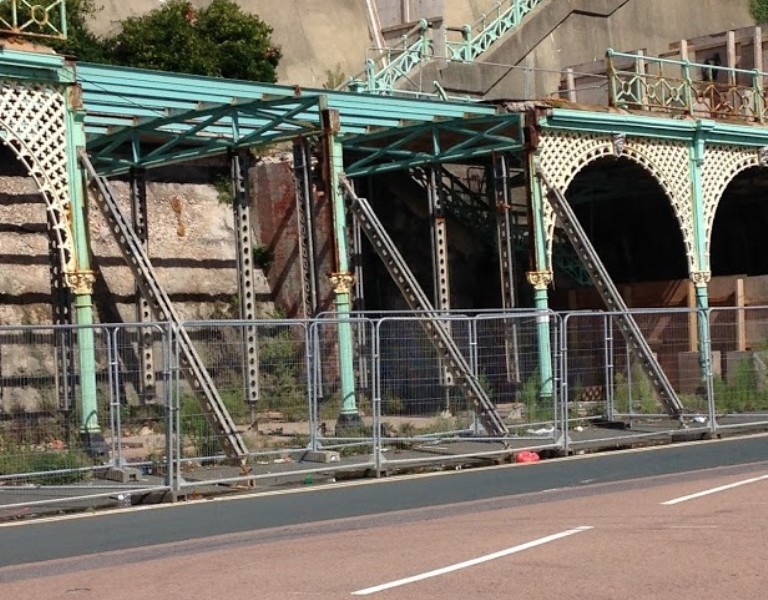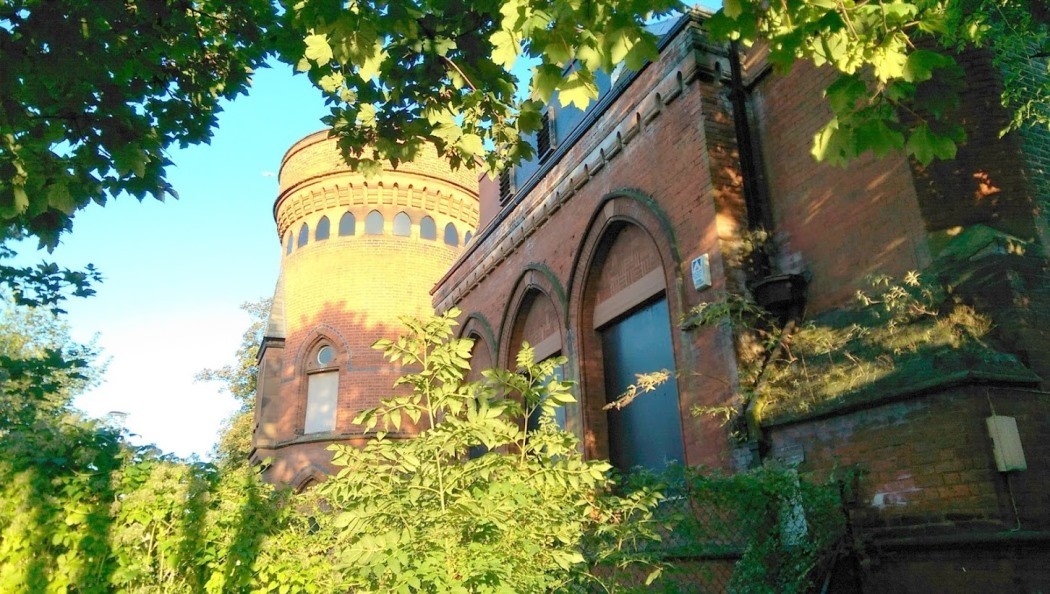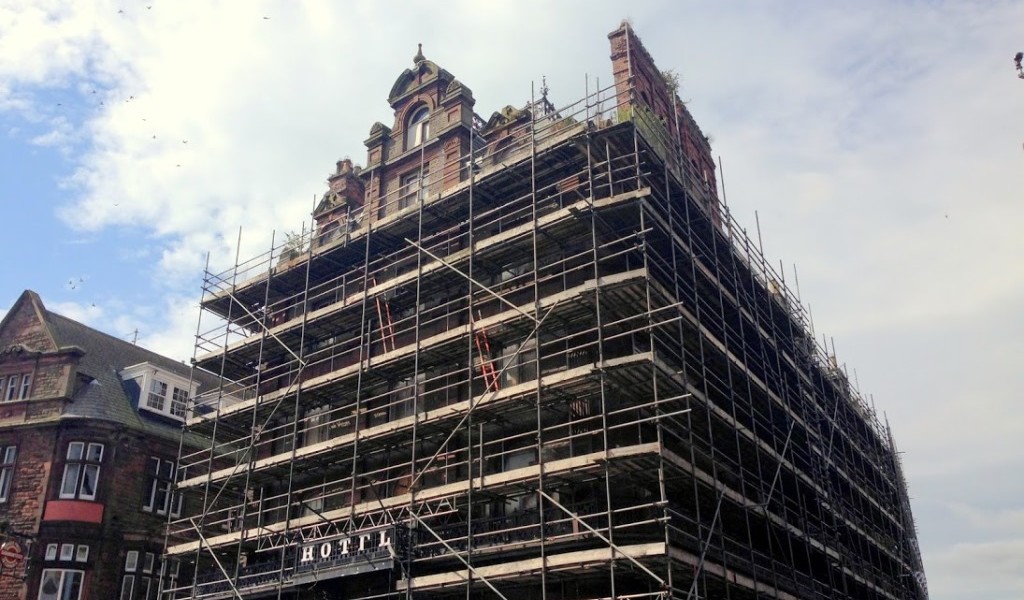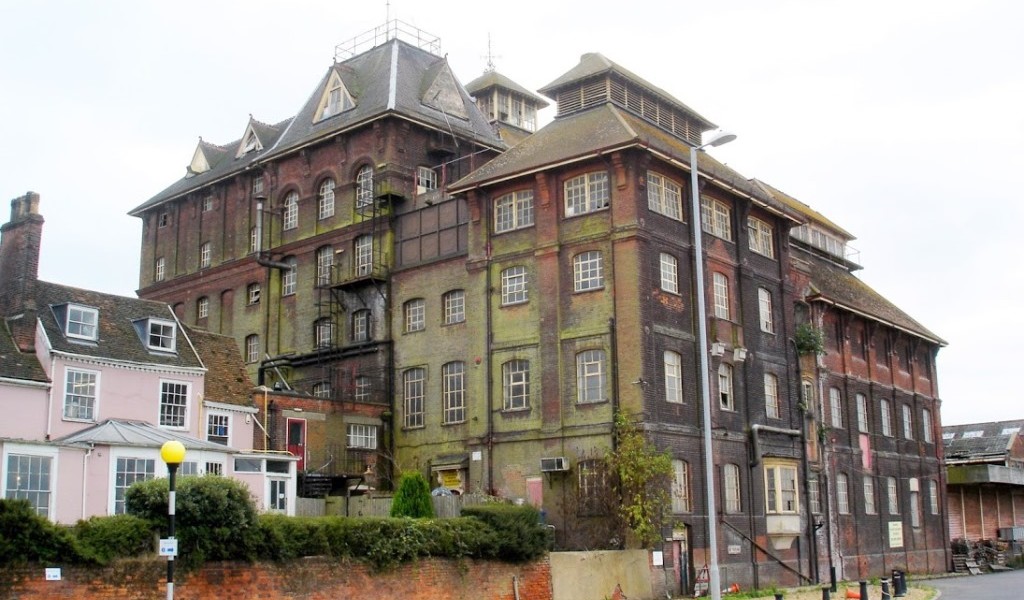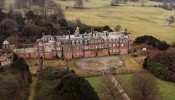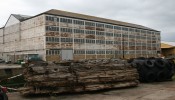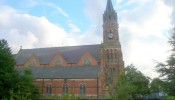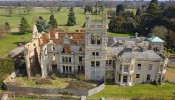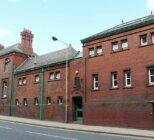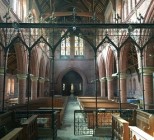The Victorian Society’s annual Top Ten are all nationally important listed buildings in real risk of being lost if action is not taken in the immediate future.
They include Birnbeck Pier (main image), Weston-super-Mare – the only pier in Britain built around an island – now on the verge of collapse, Brighton’s seafront walk, Madeira Terrace, said to be the longest continuous cast iron structure in the world, now closed to the public and set to be entirely replaced. Kinmel Hall, often dubbed the ‘Welsh Versailles’ or ‘discount Downton’, subject to thefts while lying neglected by its British Virgin Islands registered owner since 2011. Sheerness Boat Store, the world’s earliest survival of this kind of iron framed structure – a technique near universally used in modern steel framed buildings, and London’s gothic Ladywell Baths which sank its own 270ft well to avoid paying the water company but remains derelict despite a London property boom.
The national exposure that the buildings receive from inclusion in the Society’s Top Ten often leads to new interest in the buildings. In a video (below) launching the Top Ten Griff Rhys Jones, Victorian Society Vice President, said: “Share the list around because these are buildings that need help, and we need you to help them.”
“We’re grateful to everyone who nominated an endangered building,” said Director of the Victorian Society, Christopher Costello, “All the buildings included in this year’s Top Ten are listed buildings meaning that the Government has recognised their national importance. These buildings illustrate Britain’s history in tangible form. The Grade I listed Boat Store at Sheerness has worldwide importance. All of them deserve better than their current situations.”
There have been positive developments for some of 2014’s Top Ten. The Victorian Society’s campaign to re-erect Sheffield’s Crimean War Monument in the city centre in 2016 for the 160th anniversary of the Crimean War ending has received support from Nick Clegg, the Royal British Legion and the War Memorials Trust among others. A petition has also been organised to include the monument in Council plans for a £480 million ‘retail quarter’.
Repairs have started on the Hammerhead Crane in Cowes following a £76,000 grant from Historic England. Work has also started to tackle flooding and contamination risks at the Navigation Colliery in Crumlin Wales. Cardiff Coal Exchange has seen a friends group established – with Cardiff Council said to be in discussion with interested parties about redevelopment plans.
The 2015 list of endangered buildings
- Ladywell Baths, Lewisham, London (Grade II, 1884, Wilson and Son & Thomas Aldwinkcle) Lewisham Council, has struggled to find anyone to take the building on which has suffered internal vandalism.
- Kinmel Hall, Wales (Grade I, 1870-1874, W E Nesfield) The ‘Welsh Versailles’ or ‘discount Downton’ remains unused and neglected since its purchase in 2011 with plans for a hotel seemingly no closer to implementation.
- St Luke’s Church, Wolverhampton (Grade II*, 1860-61, George Robinson) A major landmark in a deprived area of Wolverhampton, St Luke’s has an exceptionally well-preserved Victorian interior.
- Tolly Cobbold Brewery, Ipswich (Grade II, 1896, William Bradford) Outline planning permission was granted in 2013 to turn it into a mixture of flats, businesses and leisure facilities but no progress has been made so far.
- Overstone Hall, East Midlands (Grade II, 1860, William Milford Teulon) The house has the earliest known example of cavity wall insulation. It also had a central heating system, gas lighting and a butler’s lift.
- Sheerness Boat Store, Kent (Grade I, 1856-60, Col GT Green RE and William Scamp, Admiralty Works Department) This disused boat store is the world’s earliest surviving example of a multi-storey iron-frame and panel structure.
- Madeira Terrace, Brighton (Grade II, 1890- 1897, Philip C Lockwood) A seafront walk said to be the longest continuous iron structure in the world, but now closed to the public and set to be replaced.
- Central Plaza Hotel, Carlisle (Grade II, 1880, Daniel Birkett) The Council has spent £77,000 on the building in recent years but have been unable to find a developer willing to take it on.
- Birnbeck Pier, Weston-super-Mare (Grade II*, 1862, Eugenius Birch) Storms earlier this year have left one walkway on the verge of collapse.
- Hunslet and Victoria Mills, Leeds (Hunslet Mill Grade II* c1842 William Fairbairn, Victoria Mill, Grade II, c1838) A huge multi-storey complex of red brick mill buildings, Hunslet is thought to be the last, and individually the largest, of Leeds’ great flax-spinning mills.


